 (by peter hallward)
(by peter hallward)Tuesday, December 14, 2010
post thursday in london
 (by peter hallward)
(by peter hallward)kulturprojekte berlin discussed last night
Sunday, December 12, 2010
sweet anticipation @ salzburger kunstverein

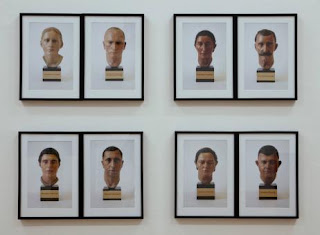


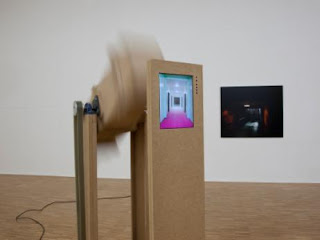
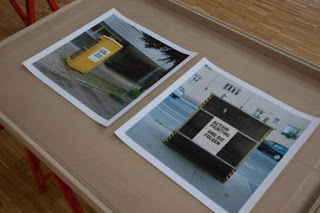

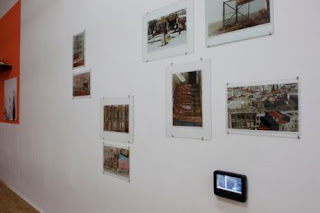

Wednesday, December 1, 2010
http://www.workerspunkartschool.blogspot.com/
'Why are we here?' - Attempt #1
I have come to this city regularly since 2005. And I have always had good reasons to come; exhibitions, workshops, studio visits, good friends and easy moods. A good friend always underlines that Berlin is an artists' city. Now that I “officially” live here, I am questioning what it does mean to live here as a curator; how to analyze what is going on in this city where many contemporary art related people reside and work from. So I decided to take some occasional short notes about the things happening and perform some writing exercises of my readings to formulate better how I am thinking and feeling about the ‘current’s of contemporary art here, and also trying to understand why we are all here.
#1
Absalon retrospective opened in KW last Saturday. Most of the works he made are there, exhibited on all floors. Making a retrospective is always a hardcore business. An in this case the question is how to retrospectively curate an oeuvre that started to develop itself around radical transformations of dwelling, aiming to intensify the private space of living mentally and spiritually? The exhibition feels more like an inventory or an attempt of collecting together. The radicalness of Absalon’s designs, hanging between monadic and nomadic, becomes repetitive, loses its almost disturbing feeling of plainness. Wouldn’t it be great for example that the cellules were distributed over a couple of locations inside and preferably outside KW? Then people would be able to experience the sense of solitary dwelling in different surroundings, just like the artist himself who started to model and spread these cellules to six cities to be able live in his idealized, personal space when he travels?
Another fact I am still questioning is that all the models brought together were painted the same hue of white of the exhibition spaces. And it seems like they have been recently painted over. I don’t know if there was a set of instructions left by Absalon for the display of these pieces. But something felt wrong, all around surrounding white made me lose my point of reflection. The space has memory and institutions can perform that memory, not only archive it, such as learning from the artists they show, the exhibitions they make. I am thinking of Renata Lucas’ subtle and puzzling gestures in and out KW just shown recently (the way she used the material of the building, the way she connected inside and outside) and of Ahmet Ogut’s unforgettable gesture performed for 5th Berlin Biennial, a completely asphalted ground floor. Such gestures make us question the nature of the surrounding we are in and imagine their and our further possibilities. In this respect, the retrospective, though having the merit of bringing most of the produced work, small models and sketches together, unfortunately tames and domesticates Absalon’s phenomenologically devised challenges to use and function in everyday living.
#2 "Why thinking in Turkish can be a good catalyzer in Berlin?" soon
Thursday, November 25, 2010
Natascha Sadr Haghighian and Ashkan Sepahvand's project at casco

Monday, November 22, 2010
Open Call
Within the framework of the 7th Berlin Biennale for Contemporary Art in 2012, curated by Artur Żmijewski, artists from all over the world are requested to send in their artist material for a research investigation, following the conditions below.
We accept artistic material in hard copy formats not bigger than A3 (297 x 420 mm or 11.69 x 16.54 in.), printed images, digital data, as well as DVDs.
PDFs in A4 (297 mm x 210 mm or 11.7 x 8.3 in.) or fax will also be accepted.
Please do not send any original artworks.
We welcome all possible languages of your artistic comments and explanations. However there should equally be an English version.
As the research also focuses on the question whether artists consider themselves to be political, please inform us about your political inclination (e.g. rightist, leftist, liberal, nationalist, anarchist, feminist, masculinist, or whatever you identify yourself with) or whether you are not interested in politics at all.
Please send your artistic statement or presentation as a hardcopy via regular mail, via e-mail or fax to the following address or number before January 15, 2011:
Berlin Biennale
– Open Call –
KW Institute for Contemporary Art
Auguststraße 69
10117 Berlin/Germany
e-mail: call@berlinbiennale.de
fax: +49. 30. 24 34 59 88
This open call is not guarantying that you will be invited to take part in the 7th Berlin Biennale. Please be aware that your submission might be used and published within its framework. Please also consider that the 7th Berlin Biennale is not able to send back any received material, but that everything will be integrated into the public research archive of the Berlin Biennale.
The open call is available for download in various languages (Arab, Chinese, English, French, German, Hebrew, Hindi, Italian, Polish, Portuguese, Russian, Spanish) on the website www.berlinbiennale.de.
Wednesday, November 17, 2010
soon in berlin, texte zur kunst discussing art criticism
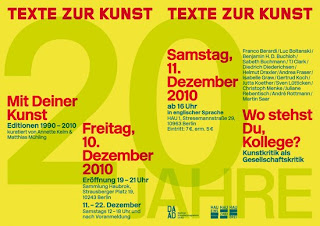
www.textezurkunst.de
Symposium on the occasion of the 20th anniversary of Texte zur Kunst
December 11, 2010, Hebbel-Theater am Ufer (HAU 1), Stresemannstrasse 29, Berlin
Conference organizers: Isabelle Graw & André Rottmann
Conference language: English
Tickets available at: www.reservix.de
On the occasion of the 20th anniversary of the renowned Berlin-based journal for contemporary art, this symposium investigates art criticism's potential to become social critique. When the journal was founded in Cologne in 1990, returning to the methods of social art history promised to link current artistic production to larger economic and ideological frameworks. Even if this approach has remained an important touchstone in the critical work of the journal and its most frequent contributors, new models have emerged: discussions around biopolitics and immaterial labor under post-Fordist conditions have radically questioned long-held methodological assumptions about the visual arts' potentially antagonistic role in the capitalist societies of the West. Moreover, the notion of the aesthetic, which had for many years been utterly dismissed due to its association with idealist concepts of autonomy, has returned in unforeseen ways—by way of a recourse, for instance, to an emphatic and ethically motivated defense of aesthetic experience and an immersive attention to formal detail.
The symposium takes this situation as a point of departure in order to reflect on the role and potential of art criticism as social critique today.
Program, Saturday, December 11, 2010
4 pm:
Official Welcome
by Arend Oetker, Berlin
Introduction
by Isabelle Graw, Frankfurt am Main/ Berlin & André Rottmann, Berlin
4:15 pm:
Opening Statement
by Diedrich Diederichsen, Vienna/ Berlin
4:30 pm:
Panel I: New Spirit of Criticism? The Biopolitical Turn in Perspective
Like no other field of theoretical investigation, studies of biopolitics and related discourses around immaterial forms of labor in post-Fordism have come to inform recent art criticism and history. This sort of approach to art allows us to revisit historic as well as contemporary artistic practices in terms of their complicity with an economic and political regime that seeks to produce social life and to control subjectivity by way of internalized notions of productivity, creativity, and individual freedom. These notions, still so dear to art-historical discourse, appear more problematic in a perspective informed by the discourse of biopolitics than repressive structures of authoritative interpellation. Yet the urgent question arises and needs to be addressed: does not this new master trope of (art) criticism itself amount to a totalizing gesture that subsumes all aesthetic phenomena to the insurmountable grasp of an omnipresent but elusive regime of power? Is the recourse to biopolitical thought maybe even part and parcel of the notion of life it wishes to analyze critically?
with
Franco Berardi, Milan
Luc Boltanski, Paris
Sabeth Buchmann, Vienna/ Berlin
André Rottmann, Berlin
chaired by Martin Saar, Frankfurt am Main/ Berlin
6:30 pm:
Panel II: Between Specificity and Context. Social Art History Revisited
Social Art History, as it had been rediscovered and expanded as a methodology in Anglo-American art history in the early seventies, once provided the privileged critical model of how to align supposedly autonomous aesthetic phenomena with the specific historical, discursive, ideological, and economic conditions that shaped their production and the subjectivity of both artist and beholder. However, this approach was deservedly contested for its tendency to interpret works of art in a rather schematic fashion as mere illustrations of social conditions, ultimately neglecting the genuine logic of artistic phenomena. Are there theoretical models today that, while staying true to Social Art History's methodological insights, can lead a way out of this theoretical impasse? Is there a way to reconcile formalist or phenomenological approaches with an attention to social and historical factors? And how can we write a contemporary social history in a non-reductive way, given recent shifts in media culture and forms of immaterial labor?
with
Benjamin H. D. Buchloh, Cambridge, Mass./ New York
Andrea Fraser, Los Angeles
Gertrud Koch, Berlin
Isabelle Graw, Frankfurt am Main/ Berlin
chaired by Sven Lütticken, Amsterdam/ Utrecht
8:30 pm:
Break
9:30 pm:
Panel III: From the Anti-Aesthetic to Aesthetic Experience?
In recent years, art criticism has witnessed a complete re-evaluation of the validity and reach of the notion of the aesthetic. Whereas postmodern theories of artistic production of the 1980s were largely determined by an anti-aesthetic impulse in their attempt to contest idealist tenets of the bourgeois appreciation of art, today's debates are shaped by a return of the aesthetic in terms of a new valuation and conceptualization of the beholder's experience of artworks, even if the latter defy modernist ideals of autonomy and self-sufficiency. This panel sets out to explore the implications and repercussions of this paradigm shift: Is the notion of aesthetic experience inadvertently championing an individualistic idea of the beholder? To what extent can it provide a model that would do justice to the specificity of a work in terms of its form and content as well as its social context, rather than explicating a universal mode of perception? Might the aesthetic be reliant on an emphatic idea of "Art" that, for many good reasons, had been challenged—if not utterly shattered—by critical art practices ever since the avant-gardes and the new spirit of capitalism, which is to a certain degree based on the recuperation of artistic critique?
with
T.J. Clark, London
Helmut Draxler, Stuttgart/ Berlin
Jutta Koether, Hamburg/ New York
Juliane Rebentisch, Frankfurt am Main/ Berlin
chaired by Christoph Menke, Frankfurt am Main/ Berlin
learning zulu

image: mary sibande
text from kristinpalitza.wordpress.com
The plane hits the tarmac with a brief thud. I have landed in South Africa, for the first time. As I exit through the sliding doors of the baggage claim area, an elderly woman is waving at me. She works with Amnesty International, one of the organisations I have come to volunteer for, and she has kindly offered to host me for the first couple of weeks of my stay, until I find a place of my own.
She is talkative. On the way from the airport to C.’s home, I am told a variety of colourful and impressive stories about her life. I presume they are meant to give me a) an introduction to my host and b) an insight into the recent political history of the country. C. is not shy to talk about her achievements as a liberal white in the anti-apartheid struggle. And she has every reason not to be. She was a member of the Black Sash and had many black friends, who she didn’t hesitate to drop off in townships after curfew, when demonstrations ran late, even though her husband thought it too dangerous. To defy segregation and unfair apartheid laws, she also went swimming with black friends on a whites-only beach, risking arrest. According to her husband J., the apartheid regime soon took such a strong interest in C.’s political activities that its spies rented the house opposite their home to be able to watch her every step.
As we pull into the driveway of their simple face-brick single storey in an upper middleclass neighbourhood, I am made aware that C.’s house is the only one in the area that is not surrounded by a fence. One can walk straight up to the front door. C. and her husband make a point not to be one of those post-apartheid whites who lock themselves in … and others out.
Needless to say, I am impressed and feel blessed to have found a host with such an impressive life story. These first weeks as C.’s guest will be an incredible opportunity to get to know South African life from a critical, politically aware point of view, I think to myself.
C. shows me to my room and after I have dropped off my luggage gives me a quick tour of the house so that I can make myself comfortable. Room by room, she explains where I can find what and about the daily routines of her household. I quickly gather that C.’s life is organised down to the tee, according to a well thought out system and schedule. And I am expected to quickly catch on so that I can make sure to fit in. From 12h00 to 13h00 every day, for example, is J.’s “sacrosanct hour”, I am told, and during this time, no-one is allowed to speak to him. Not the domestic worker, not me, the guest, and not even his wife. It begins to dawn on me that this stay will be an interesting one from more than just a political perspective.
We proceed to the kitchen, where I am shown how to find my way around. C. explains based on what system the fridge and the scullery are stocked. She also shows me where to find glasses, plates, cutlery and so on. Then, she opens the cupboard underneath the sink. Next to neatly stacked cleaning paraphernalia is placed a lonely, chipped set consisting of a plate, a mug, a fork and a teaspoon. The teaspoon is important because ‘they’ like to drink their tea with lots of sugar. C. is speaking about her domestic worker, who, she explains, does not eat from the same crockery and cutlery than the rest of us. I am a little shocked but say nothing, only too aware of my role as a guest, who has come from another continent, who knows nothing about how life is lived in the New South Africa and who better be grateful for the generous hospitality offered. How dare I question or criticise?
I go to my room and lie down on the bed to rest from the long flight. My first impressions and experiences of this country so different from anything I know float through my head until I fall into a deep, exhausted sleep.
I am awoken two hours later by a gentle knock on the door. “Dinner is ready,” says C., popping her head into the room. When I walk into the dining room, I am introduced to J., an elderly gentleman with refined features and a welcoming smile. A black woman is carrying bowls of food from the kitchen and places them onto the elegantly laid-out dining table. I am briefly introduced to S., the domestic worker. Then, we sit down to eat, while S. retreats to the kitchen. I imagine her sitting all by herself on a wooden chair with her chipped plate on her lap.
After we have dished up, J. notices that salt and pepper are missing. He opens a little drawer next to his place at the table and takes out a silver bell. Ding, ding, ding it goes and a few seconds later, S. emerges from the kitchen to inquire what is needed. Apologetically she scurries back into the kitchen, to re-enter the dining room with a set of salt and pepper shakers. For the second time in the day I am flabbergasted. For the second time, I don’t say anything. Is this really the house of the liberal anti-apartheid activist who risked arrest by protesting discriminatory apartheid law?
The next morning, I am awoken by the warm rays of the sun that shine through my bedroom window. Even though it is winter in South Africa, it is nice and warm. T-shirt weather. When I step out onto the veranda to breathe in the fresh morning air, I come upon J. who is reading the newspaper in a wicker chair in the shade. We get to talk about this and that, the news of the day, the quality of South African newspapers and how I am planning to spend my time in this country. “If you truly want to understand this country and its people, you should learn isiZulu,” J. suggests. That’s a good idea, I nod. J. gets up to search for an English-Zulu phrasebook he would like to lend me. Five minutes later, he is back, holding a thin book in his hand. “Here you go,” he says as he hands it to me.
I only get to sit down for my first isiZulu ‘lesson’ in the evening, after a day of taking in the sights of the city and familiarising myself with my new surroundings. I open the cover page of the book and see that it is divided into several chapters around the home: the kitchen, the garden, the garage and so on. I turn to the first chapter: the garden. “Fetch the watering can” the first sentence reads. “Don’t dig here” the next follows. “Clean your boots” reads the next one. I can see where this going. It suddenly dawns on me that what I am reading is not a Zulu phrasebook to understand a culture and a people but rather a tool for a white baas to give orders to his staff.
With a sigh, I close the book, realising how many shades of grey there are between black and white.
Wednesday, September 29, 2010
Former West in Istanbul: Art and Political Imagination
Sunday, September 26, 2010
the potosi principle, coming soon @ hkw berlin

Artur Żmijewski appointed as bb7 curator
sense and sense- emily roysdon @ konsthall c

SENSE AND SENSE
Emily Roysdon with MPA
15.9—24.10 2010
The New York based artist Emily Roysdon will present her first solo exhibition at Konsthall C in Stockholm. Sense and Sense is a project developed on site in Stockholm over the last six weeks. Emily Roysdon invited performance artist MPA (New York) to collaborate on a series of photographs and a video for the exhibition. For Sense and Sense Roysdon has worked with the relationship between use and regulation of public space.
–Through the years I have been exploring how political movements are represented, and it is because of this that I was attracted by Sergels torg as a place. In recent projects I have been connecting that to a wider understanding of choreography – choreography as organized movement in an aesthetic and political sense.
–What is so fascinating for me with Sergels torg is that it is a planned site for political protest. At the same time; when you approach the actual place and look down on it from the railing above, Sergels Torg turns into a panoptic place and an abstraction.
A second part of the exhibition is a wallpaper project installed in a number of different places in Stockholm, for instance the City Library.
This is Emily Roysdon’s first exhibition project in Sweden. In 2008 she was a resident at the International Artists Studio Program in Sweden (IASPIS), when she also presented the performance Work, Why, Why not at Weld, Stockholm.
Emily Roysdon (1977) is a New York and Stockholm based artist and writer. Her working method is interdisciplinary and recent projects take the form of choreography, photographic installations, printmaking, text, video, curating and collaborating. Roysdon recently developed the concept “ecstatic resistance” to talk about the impossible and imaginary in politics. The concept debuted with simultaneous shows at Grand Arts in Kansas City, and X Initiative in New York.
She is editor and co-founder of the queer feminist journal and artist collective, LTTR and she is a contributing member with the band MEN. In 2010 Roysdon’s work has been shown at the 2010 Whitney Biennial, Greater NY at PS1, Mixed Use: Manhattan at the Reina Sofia in Madrid and Bucharest Biennial 4. She is participating in Manifesta 8 and in December she will have her first solo show in the USA at Matrix, Berkeley Art Museum.
Read more about Emily Roysdon:
www.emilyroysdon.com
the jerusalem show

The Jerusalem Show (‘Ala Abwab Al Janna) is a novel and socially significant visual art event that is headed and organized by Al-Mamal Foundation for Contemporary Art and this year is featuring its fourth edition. The Show encompasses an exhibition of contemporary art works for Palestinian and international artists. Art projects and interventions are presented in indoor and outdoor venues and reflect on the spiritual, political, historical and cultural import of the city of Jerusalem. The Show is a unique action, promoting a re-reading of the city in creatively open, accessible and interactive manner.
The theme for the Jerusalem Show IV-2010 is Exhaustion. It is inspired by the prevailing state of apathy which is fuelled by Exhaustion, anger, helplessness, docility and alienation in one’s own town. Exhaustion describes best the widespread feeling amongst the majority of the inhabitants of the city. Be it the closure, the lack of any viable solution or even a political horizon, the crumbling economic conditions, the closing in of Palestinian residents through an orchestrated policy of confiscation, demolition, fines and taxation, all contribute to a state of insecurity and fear of the future. Nothing is offered, given or provided hence people revert to snatch, grab, jump the line, and most importantly break the atrocious laws, any laws even those that govern human relations. All this calls for some investigation, some probing and possibly uncovering and betrayal.
For the Jerusalem Show IV, 18 Palestinian and international artists were invited by Al-Mamal Foundation to think through the theme of Exhaustion in the context of the city and its environment, and to produce works that explore issues involved in the condition and feeling of Exhaustion which afflicts the whole of Palestinian society and is palpable in Jerusalem particularly. In addition, 11 young Palestinian artists were commissioned by al Hoash to produce new artworks to be presented in the framework of the Jerusalem Show.
Jerusalem Show Participating artists: Anonymous, Karim Abu Shakra, Moayed Amleh, Asad Azi, Mirna Bamieh, Taysir Batniji, Bahar Behbahani, Youmna Chlala and Jeannette Gaussi, Mohamad Fadel, Sarah Faruki, Issa Freij, Mohamad Hawajiri, Dima Hourani, Khaled Jarrar, Yazan Khalili, Martin Lebioda, Randa Madah, F. Zahir Mibineh, Ariane Michel, Nissrin Najjar, Michael Rakowitz, Rigo 23, Raeda Saadeh, Salama Safadi, Inass Yassin
Jerusalem Show performance events: Uriel Barthélémi, Vlatka Horvat, and Sabreen band (a Michael Rakowitz project).
Wednesday, September 22, 2010
TOPHANE SALDIRISI İÇİN BASIN AÇIKLAMASI/PRESS RELEASE FOR THE ATTACKS ON TOPHANE ART GALLERIES IN ISTANBUL
TOPHANE SALDIRISI İÇİN BASIN AÇIKLAMASI
Dün akşam Tophane sanat galerilerinin ortak açılışı sırasında düzenlenen örgütlü saldırıda, sergi açılışına katılan sanat izleyicileri 40-50 kişilik bir grup tarafından tartaklandı, yaralandı, galeriler tahrip edildi. Aralarında sanatçılar, akademisyenler, öğrenciler, yazarlar, Türkiye ve yurtdışından gazeteciler, yabancı ülkelerin kültür ataşeleri olan sanatseverler üzerinde tam bir terör ortamı yaratıldı. Saldırıda, gaz spreyi, bıçak, kırık şişeler, demir sopalar ve coplar kullanıldı. Polonya, Hollanda, Alman, İngiliz uyruklu sanatseverler de hastanelere kaldırıldı. Saldırının daha vahim sonuçlar yaratmaması büyük şanstı.
Bir süreden beri, Tophane’de bir grubun sanat galerilerinin açılışını ve calışmalarını engellemeye yönelik şiddet unsuru içeren eylemlerine şahit olduk. Çesitli defalar galerilerimiz, sanatçılar, ve izleyiciler taciz ve tehdit edildi. Bu eylemlerin, internet üzerinden ve mahalledeki mekanları kullanarak örgütlenen bir grup tarafından gerçekleştirildiğini biliyoruz.
Taşındığımız ilk günden beri, komşularımızla, çocuklarla, anne ve babalarla, esnafla iletişim içerisinde olduk, beraber projeler gerçekleştirdik. Biz Tophane’deki kültürel çeşitliliğin ve dokunun kalıcı bir parçası olduğumuza inanıyoruz. Bu örgütlü saldırılar, Tophane ahalisine mal edilemez. Bu saldırganlar, mahallemizin güvenliği açısından ciddi bir tehdit oluşturmaktadır.
İstanbul’un merkezinde, bir kültür başkentinde yaşanması hiçbir şekilde kabul edilemez bu örgütlü saldırı, aynı zamanda tüm sanat kurumları için de ciddi bir uyarıdır. Bu eylemin nasıl örgütlendiğiyle ilgili ciddi bir soruşturma yapılması ve sorumluların bulunması kentimizin güvenliği açısından zorunludur.
Daha önce Tophane’de İMF protestolarına katılanlara karşı yaşanan linç girişimi de bu oranda bir şiddet gösterisi olmuş ve basına yansımıştı. Ancak bu olaylar sonrasında saldırganların cezasız kalması, bu tür şiddet eylemleri yapan gruplar için cesaretlendirici bir örnek olmuştur.
Valilik, emniyet ve siyasi partiler bu konuya gereken duyarlılıkla yaklaşırlarsa, bu gibi saldırıların önünün kesileceğine inanıyoruz. Aksi takdirde bu tür eylemler, daha vahim boyutlar kazanabilir ve kentimizin sosyal ve kültürel hayatı için bir tehdit haline gelebilir.
Olayın tekrar etmesine fırsat vermemek üzere dün gece yaşananlara tanık tüm dostlarımızı Beyoğlu Karakolu’na ifade vermeye çağırıyoruz.
Tophane galerileri, sanatçılar ve sanatseverler
------------------------------------------------
PRESS RELEASE FOR THE ATTACKS ON TOPHANE ART GALLERIES IN ISTANBUL
In an organized attack on art galleries in the Tophane neighbourhood of Istanbul, guests attending exhibition openings were physically assaulted in a lynch attempt by a gang of 40-50 people. The audience subjected to this atmosphere of total terror featured artists, academicians, students, writers, local and international journalists and cultural attaches from consulates. The attackers used knives, batons, broken bottles and pepper spray. The injured include Polish, Dutch, German and English guests.
We have witnessed for a time now the actions of a certain group to disrupt the openings, exhibitions and events of art galleries in Tophane and to create an atmosphere of intimidation. Galleries, artists and guests have been harassed and threatened numerous times. We know that these actions are carried out by a group organized via certain web sites and around certain localities in the neighbourhood.
We have always had a strong bond of communication with all our neighbours, with children, parents and other commercial enterprises in the neighbourhood, and carried out community projects. We believe we are a part of the cultural and social scene in Tophane. These organized attacks cannot be attributed to the Tophane community. These assailants constitute a serious threat to the security of our neighbourhood.
This organized attack in the centre of Istanbul, a cultural capital, is in no manner acceptable. This attack spells a clear and genuine warning to all art institutions. A serious investigation into the organizers and perpetrators of this attack is necessary for the safety of our neighbourhood and city.
Participants in protests against the IMF had previously been attacked in a similar manner in what can only be described as a lynching attempt. However, this attack remained uninvestigated, providing an instance of encouragement for the groups carrying out such violent attacks.
We believe these attacks can be prevented if the governor’s office, the police forces and political parties treat this incident with appropriate sensitivity. Failing that, such incidents will take on more perilous proportions and form a grave threat for the social and cultural life of our city.
Tophane galleries, artists and art audience
